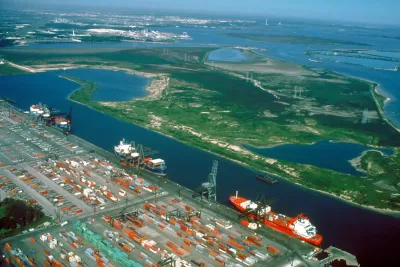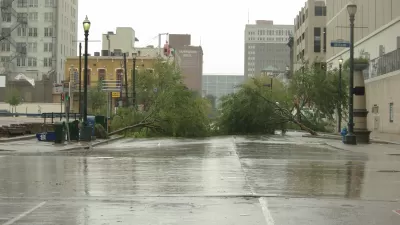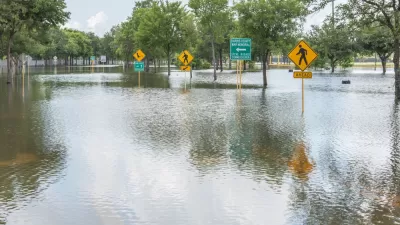The Houston Chronicle editorial board argues for the construction of the so-called 'Ike Dike,' but warns that more investment is needed to protect the South Texas coast from future storms.

If a major hurricane hits Houston, the predictions go, it could trigger a series of disastrous effects that would wreak havoc on the city and its infrastructure. After Hurricane Ike devastated the region in 2008, writes the Houston Chronicle's editorial board, "there was a collective epiphany." Now, the U.S. Army Corps of Engineers has released a plan to protect the Texas coast from future damage. The $29 billion plan, dubbed the Ike Dike, "includes projects up and down the Texas Gulf Coast, but the bulk of the work will be south of Houston. A series of gates designed to protect against a surge of up to 22 feet would stretch from the east end of Galveston Island across the mouth of Galveston Bay to Bolivar Peninsula. Other coastal protections include 43 miles of 14- and 12-foot dunes on Galveston’s west end and on the peninsula. Gates are also planned on the western bank of Galveston Bay for Clear Lake and Dickinson Bayou."
Yet according to the Corps' own calculations, the project would only withstand a Category 3 storm surge. "Given the limitations of the current plan, and the questions still lingering, it’s time for our political leaders championing this project to acknowledge that the Ike Dike alone is not enough. It is surely not the panacea that many, including this editorial board, hoped it would be."
However, the board writes, the project is still worth it. "Our congressional leaders should vote to fund the project with the understanding that we will likely need even more than the $29 billion Ike Dike to build out other defenses." The board concludes that, while the project should be completed, "[b]uilding the Ike Dike cannot become an excuse for complacency, nor can it be a one-time alignment of stars where all the levels of government unite behind a common goal."
FULL STORY: Editorial: $29 billion won't stop the Big One. Here's why the Ike Dike is still worth it.

Planetizen Federal Action Tracker
A weekly monitor of how Trump’s orders and actions are impacting planners and planning in America.

Restaurant Patios Were a Pandemic Win — Why Were They so Hard to Keep?
Social distancing requirements and changes in travel patterns prompted cities to pilot new uses for street and sidewalk space. Then it got complicated.

Map: Where Senate Republicans Want to Sell Your Public Lands
For public land advocates, the Senate Republicans’ proposal to sell millions of acres of public land in the West is “the biggest fight of their careers.”

Maui's Vacation Rental Debate Turns Ugly
Verbal attacks, misinformation campaigns and fistfights plague a high-stakes debate to convert thousands of vacation rentals into long-term housing.

San Francisco Suspends Traffic Calming Amidst Record Deaths
Citing “a challenging fiscal landscape,” the city will cease the program on the heels of 42 traffic deaths, including 24 pedestrians.

California Homeless Arrests, Citations Spike After Ruling
An investigation reveals that anti-homeless actions increased up to 500% after Grants Pass v. Johnson — even in cities claiming no policy change.
Urban Design for Planners 1: Software Tools
This six-course series explores essential urban design concepts using open source software and equips planners with the tools they need to participate fully in the urban design process.
Planning for Universal Design
Learn the tools for implementing Universal Design in planning regulations.
Heyer Gruel & Associates PA
JM Goldson LLC
Custer County Colorado
City of Camden Redevelopment Agency
City of Astoria
Transportation Research & Education Center (TREC) at Portland State University
Camden Redevelopment Agency
City of Claremont
Municipality of Princeton (NJ)





























